Conquer On-Page SEO Challenges with These Expert Tips
Picture this: It’s a perfect world, and your website is flawlessly optimized to reach the top of Google search results. But hold on, is that just a dream? Absolutely not! With the right expertise and tools in hand, you too can conquer On-Page SEO challenges like a pro. In this blog post, we’ll unveil expert tips that will transform your website into an unstoppable force on the search engine battleground. Stay tuned and prepare for the winning strategies you won’t want to miss.
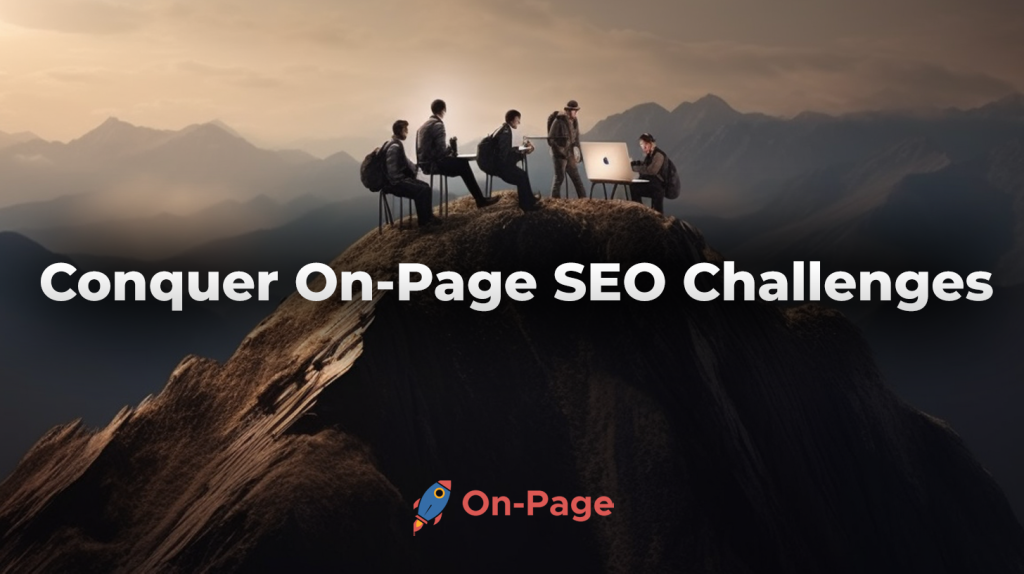
Common on-page SEO challenges include optimizing page titles and meta descriptions, addressing duplicate content, implementing schema markup, improving site speed and mobile-friendliness, and ensuring proper keyword usage. Other challenges may include fixing broken links, optimizing images and other media, and navigating the constantly evolving landscape of search engine algorithms. By using a comprehensive SEO tool like On-Page.ai, website owners can easily identify and address these challenges to improve their search engine rankings and overall online visibility.
Structuring Content for On-Page SEO
Structuring your content is the foundation of On-Page SEO. It’s the building blocks of your website and it’s important to get it right. Proper structuring impacts the readability of your website, user experience, and search engine ranking. Here are expert tips on how to structure your content for On-Page SEO.
For instance, let’s assume you’re writing a blog about the top 10 tech gadgets of 2025. You can start by breaking it down into sections that focus on the title, introduction, body, and conclusion. Attention-grabbing headlines with relevant keywords in the title are essential to rank higher in search engines.
The main argument we encounter now is the debate between short- and long-form content. There is no denying that longer articles usually involve more time and effort to read. However, long-form articles provide in-depth insights adding more value to readers who come across your webpage. This means that long-form content gets a better chance of earning backlinks from other website owners leading to better optimization and ranking on Google.
Think about it like building a house; every good house needs a solid foundation – without the right structure, everything crumbles as soon as it starts. In much the same way, if you don’t have proper content structuring, your SEO efforts too could collapse.
Another example is using bullet points or numbered lists throughout your text. Bullet points make reading easier by highlighting important points and making them stand out rather than burying them in dense paragraphs of text where they might be missed entirely.
Now that we’ve discussed structuring content for On-Page SEO let’s look at a fundamental aspect – user intent.
Understanding User Intent
User intent is about figuring out what motivates users to search for something on Google, Bing, or Yahoo. In other words, what the users are looking for and how you can align your content with their goals. By understanding user intent, you can create relevant and useful content that appeals to them, which translates into higher page rankings and greater visibility in search results.

Let’s use a real-world example: you run a pizza delivery business in downtown San Francisco and have a website where customers can place orders. When someone searches “Pizza Delivery San Francisco,” they’re most likely looking for a pizza place that will deliver to them. So, it’s essential to make sure your website includes information about your delivery service, location (with precise address), hours of operation, and contact information.
Another example is, if a user types “Best Gaming Laptop 2023,” they might be looking for product recommendations or reviews. Knowing this, creating a piece of content reviewing the best gaming laptops for 2023 with featured products will be more helpful rather than only providing general information about gaming laptops.
The debate here is not just about ranking high on Google but also delivering comprehensive answers to users’ queries. This means being able to understand the purpose behind a query when devising marketing strategies or creating web content.
Consider this analogy: user intent can be thought of as a road map. By understanding the user’s intention behind searching for something online (like using a GPS) we assist them to get their desired outcome effectively (better web experience).
Understanding user intent is crucial in creating an SEO strategy. Now let’s move onto the next important section – Mastering Meta Tags.
Proper Keyword Placement
When it comes to optimizing your website for search engines, proper keyword placement is crucial. Keywords give search engines an idea of what your content is all about, and if they are placed strategically throughout the page, they can greatly improve your chances of ranking higher in search engine results pages (SERPs). Here are some expert tips on how to optimize keyword placement for on-page SEO.
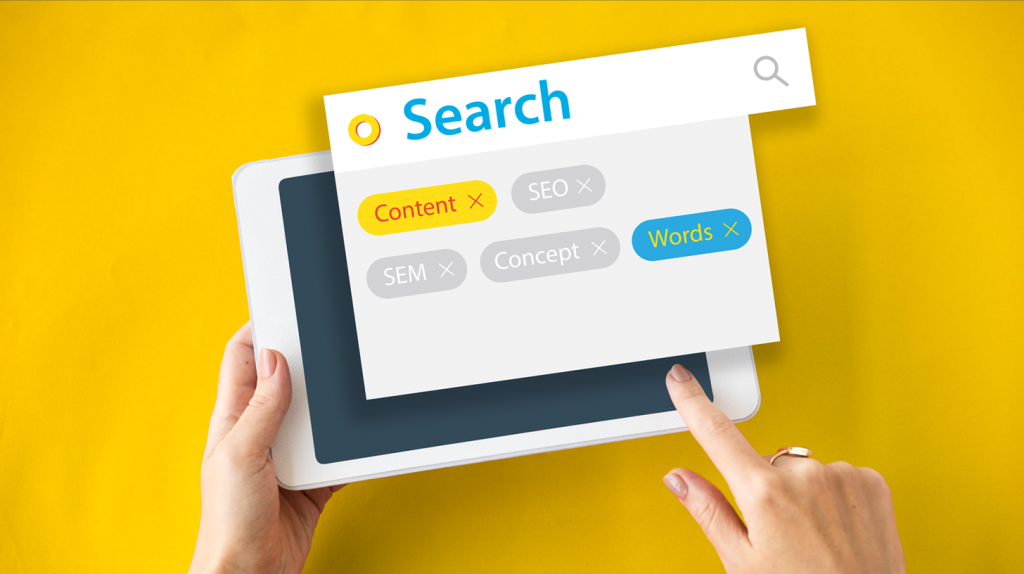
Let’s say you run a garden center and you want to rank for the keyword “organic gardening supplies”. One way to do this is to include the keyword in your meta title, URL, and throughout the text. However, you don’t want to overdo it, as keyword stuffing can actually hurt your rankings. Instead, aim to keep the keyword density at around 1-2% of the total word count.
In addition to placing keywords in visible areas like headlines and body text, it’s also important to use them in less visible areas like alt tags and meta descriptions. Alt tags provide alternative text descriptions for images on your page and help search engines understand what the image is about. Similarly, meta descriptions give a brief summary of what the page is about and often appear below the link in SERPs.
Some experts recommend including keywords in both singular and plural forms, while others argue that this can actually dilute their effectiveness. Ultimately, it’s up to you to decide what works best for your website and target audience. Keep in mind that user intent should always be at the forefront of your keyword strategy.
Think of keywords as a trail of breadcrumbs leading search engines and users directly to your content. Just like with breadcrumbs, you don’t want to leave too many or too few along the way – aim for just enough so that both search engines and users can easily follow the trail straight to your website.
Readable and Relevant Titles
Titles are often the first thing users see when searching for information online, and they can have a big impact on whether or not someone clicks on your link. But titles aren’t just important for users – they also play a major role in on-page SEO. Here’s what you need to know about creating readable and relevant titles.
For starters, make sure your title accurately reflects the content of the page. Misleading or clickbait-y titles may get users to click, but they won’t do you any favors in terms of building trust or credibility with your audience.
If you run a blog about vegan cooking, you might write a post about “10 Delicious Vegan Desserts.” This title is specific, accurate, and clearly indicates what the reader can expect from the content of the post.
Some experts recommend including primary keywords in your titles for optimal SEO benefit, while others argue that this isn’t necessary as long as the content itself is high-quality and relevant. Again, it’s up to you to determine what works best for your website and target audience.
Think of your title as a billboard on the side of a busy highway – it needs to be attention-grabbing enough to stand out among all the other billboards vying for drivers’ attention, but also informative enough that someone who sees it can quickly determine whether or not it’s relevant to their needs.
In addition to being readable and relevant, titles should also be concise and avoid unnecessary filler words. Shorter titles tend to perform better in SERPs since they stand out more visually and are easier to digest.
Instead of writing “Discover the Best Vegan Recipes for a Healthy Lifestyle,” you might opt for “10 Healthy Vegan Recipes to Boost Your Wellness.”
With these tips in mind, you’ll be well on your way to crafting effective and SEO-friendly titles. Next up: Mastering Meta Tags.
Mastering Meta Tags
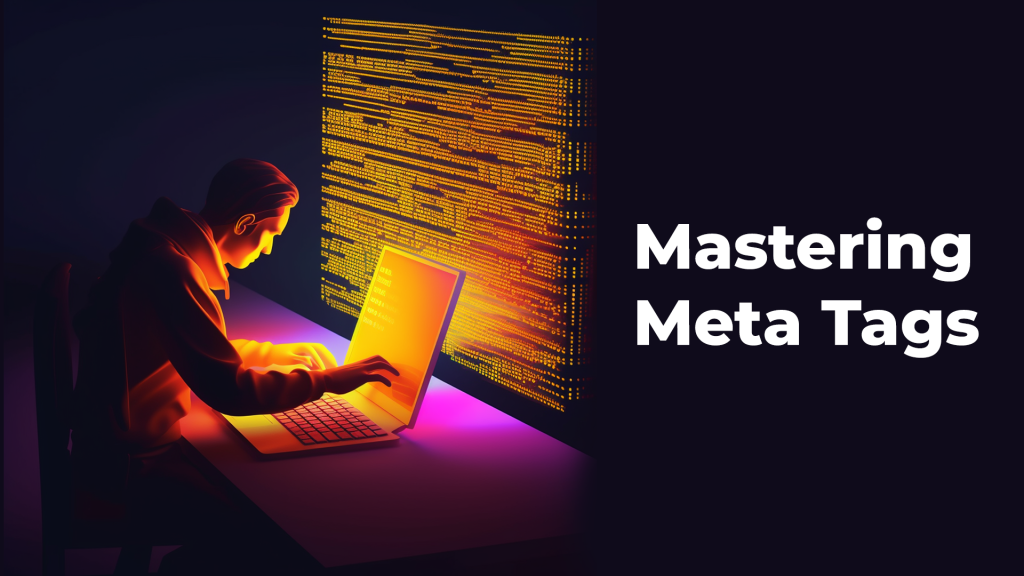
When it comes to on-page SEO, mastering meta tags is crucial. Meta tags are snippets of text that describe a page’s content. They don’t appear on the page itself but in the HTML code of your website. Here are some expert tips for mastering meta tags:
First and foremost, it’s important to use unique and descriptive meta titles and descriptions. This helps not only search engines but also users understand what the page is about and whether they should click through to it or move on to another page. For example, if you’re optimizing a page about a new product release, your meta title might be “Introducing our Latest Product Release: “, and your meta description might read, “Discover the latest features and benefits of our newest product release.”
Another important aspect of meta tags is using relevant keywords. However, avoid keyword stuffing – using too many keywords can actually hurt your rankings rather than help them. Instead, focus on incorporating one or two strategic keywords into your meta tags in a natural way.
It’s also important to ensure that your meta tags match the user intent behind the search query. Are people looking for information? A product? A service? Make sure your meta tags reflect that intent so that users find what they’re looking for when they click through to your site.
Some may argue that meta tags have lost importance in recent years with Google’s constant algorithm changes. While it’s true that their importance may have shifted over time, they still have value in helping users understand what your pages are about and improving click-through rates from search engine results pages.

Optimizing Images and Alt Text
In addition to mastering meta tags, optimizing images and alt text is another essential component of effective on-page SEO. Here are some expert tips for doing so:
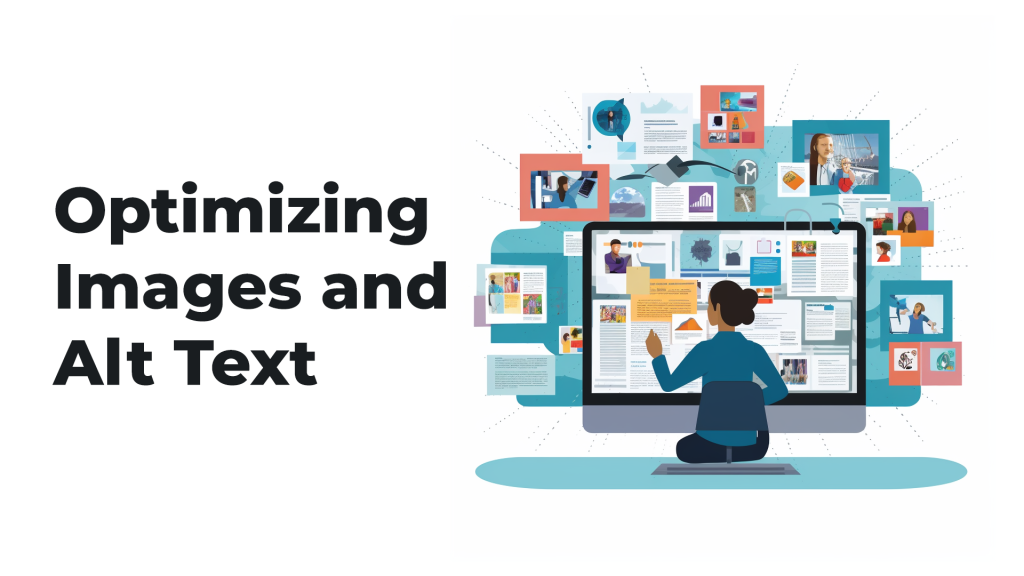
First, ensure that your images are optimized for web use. This means compressing their file size without sacrificing image quality to avoid slow loading times. Slow loading times can negatively impact user experience and lead to higher bounce rates.
Additionally, it’s important to use descriptive file names and alt text for images. This helps search engines understand the content of your images since they can’t “read” them like humans do. Properly identifying the subject matter of the image also helps visually impaired users who may be using screen readers to access your website.
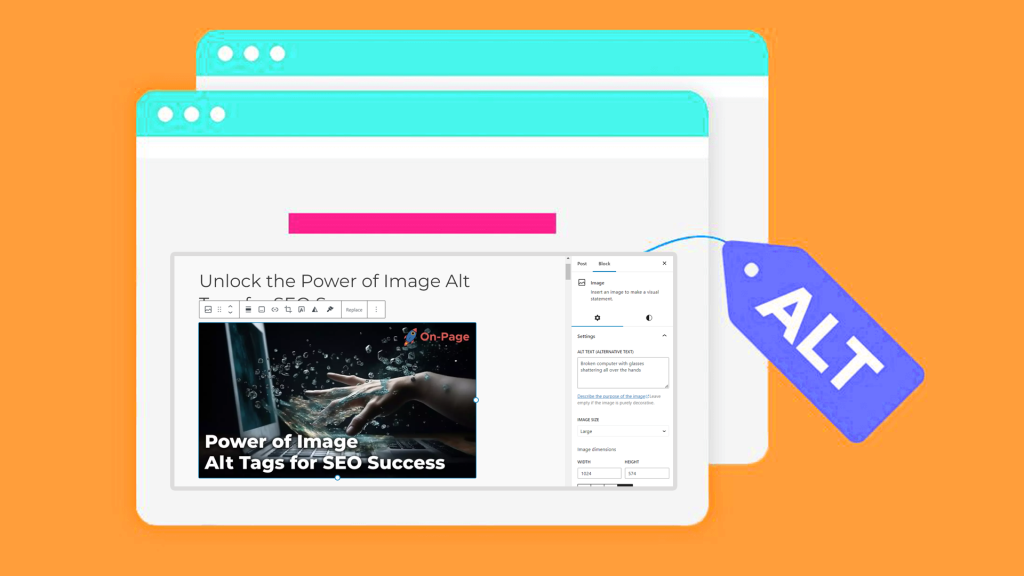
It’s also a good practice to caption your images where appropriate. This can further enhance understanding of the content for users. If you’re including an image of an individual, make sure that you have permission and that you include a relevant bio or information about them in the caption.
While some may argue that images don’t have as much importance in SEO as text-based content, remember that visual aids can greatly enhance user experience – which is ultimately what search engines are trying to promote with their algorithms.
Internal and External Linking Strategies
Linking is a crucial aspect of on-page SEO. Internal and external links are important for leading your audience to helpful sources, establishing authority, increasing page views, and ultimately driving traffic to your site. However, careless linking practices can lead to penalization by search engines and lower page rankings.
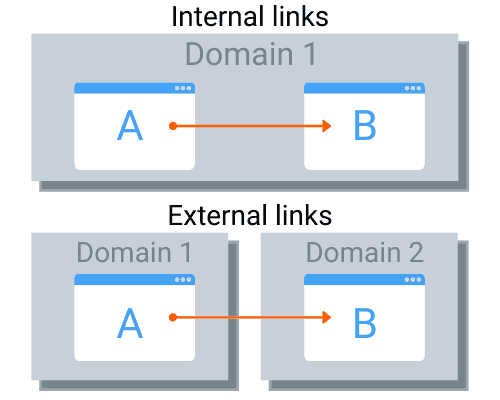
Proper internal linking is about linking pages within your website in a way that supports the user experience and enhances what’s already there. For instance, if you have a blog post discussing how to bake a cake and mention ‘decorating’, you could link to another existing article on your website that’s focused exclusively on the topic of decorating cakes. This practice connects readers with related content while keeping them engaged and informed.
Similarly, external linking strengthens both the credibility of your website and its relationship to others in the same niche market. To reduce SEO risks, we recommend linking only to reputable sources that enhance or add value to your content and follow these three fundamental principles:
- The linked-to content has relevance.
- The linked-to content enhances the current page’s main idea.
- The linked-to content is trustworthy.
Google values pages that provide value for users beyond their own domain. However, before setting out to link externally, it’s essential to check potential risks beforehand. One of which is over-reliance on external links – this sends negative signals about the quality of the current webpage including spammy or low-quality associations.
As an SEO professional or online business owner, you may wonder how many internal and external links are appropriate for each post without risking getting penalized? Generally speaking, there’s not an exact answer but depends on different factors such as individual topics/keywords involved in each post. In some situations (e.g., long-form guides), several internal links may be appropriate; in others (e.g., shorter blog posts), one or two may be sufficient.
Linking is like a citation in academic research papers. In such work, you may only cite sources according to their relevance, credibility, and how they contribute to your understanding and support of an argument. Citing those sources indiscriminately or without a solid basis often damages the researcher’s reputation. Similarly, linking on a website should provide value to both the author and readers, which can ultimately lead to higher rankings in search results pages.
Strong internal and external links are essential aspects of any effective on-page SEO campaign. On-Page.ai’s comprehensive On-Page Tool provides insights into how to select keywords strategically for your content as well as where and how to link it internally and externally. That can help avoid any future problems with linking and strengthen your overall website authority effectively.
Sign up to On-Page.ai and start optimizing your business’s content strategy.




